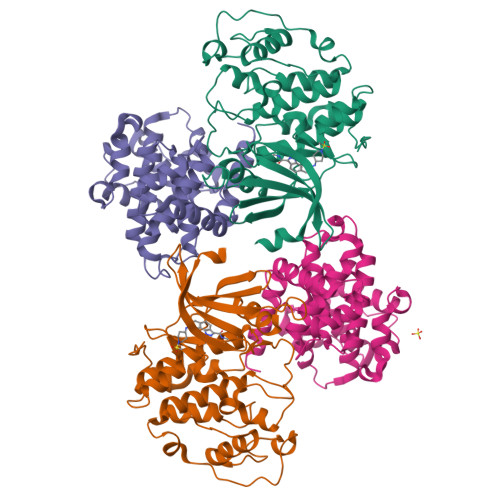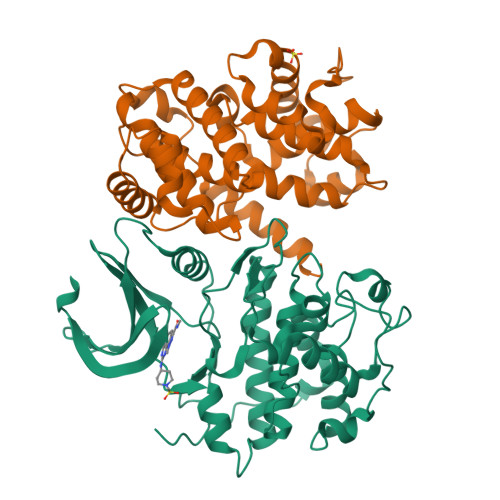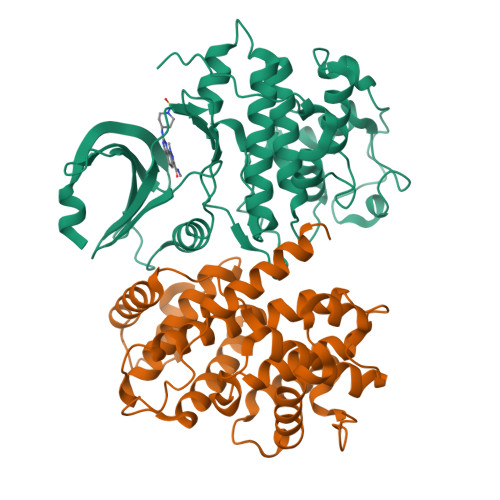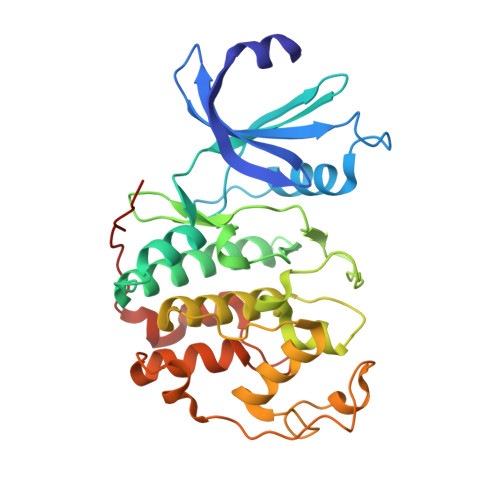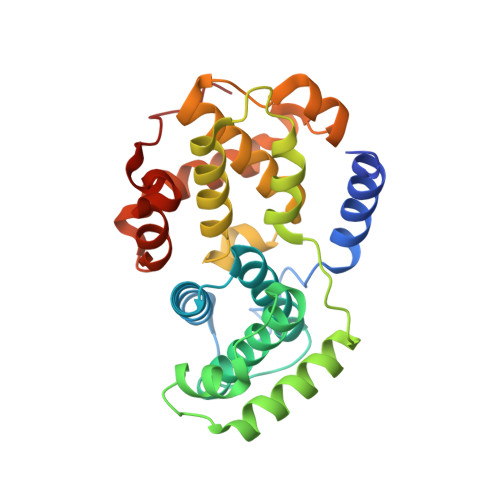Identification of Potent Pyrazolo[4,3-H]Quinazoline-3-Carboxamides as Multi-Cyclin-Dependent Kinase Inhibitors.
Traquandi, G., Ciomei, M., Ballinari, D., Casale, E., Colombo, N., Croci, V., Fiorentini, F., Isacchi, A., Longo, A., Mercurio, C., Panzeri, A., Pastori, W., Pevarello, P., Volpi, D., Roussel, P., Vulpetti, A., Brasca, M.G.(2010) J Med Chem 53: 2171
- PubMed: 20141146
- DOI: https://doi.org/10.1021/jm901710h
- Primary Citation of Related Structures:
2WXV - PubMed Abstract:
Abnormal proliferation mediated by disruption of the mechanisms that keep the cell cycle under control is a hallmark of virtually all cancer cells. Compounds targeting complexes between cyclin-dependent kinases (CDKs) and cyclins (Cy) and inhibiting their activity are regarded as promising antitumor agents to complement the existing therapies. An expansion of pyrazolo[4,3-h]quinazoline chemical class oriented to the development of three points of variability was undertaken leading to a series of compounds able to inhibit CDKs both in vitro and in vivo. Starting from the CDK selective but poorly soluble hit compound 1, we succeeded in obtaining several compounds showing enhanced inhibitory activity both on CDKs and on tumor cells and displaying improved physical properties and pharmacokinetic behavior. Our study led to the identification of compound 59 as a highly potent, orally bioavailable CDK inhibitor that exhibited significant in vivo efficacy on the A2780 ovarian carcinoma xenograft model. The demonstrated mechanisms of action of compound 59 on cancer cell lines and its ability to inhibit tumor growth in vivo render this compound very interesting as potential antineoplastic agent.
Organizational Affiliation:
Nerviano Medical Sciences Srl, Business Unit Oncology, Viale Pasteur 10, 20014 Nerviano, MI, Italy. gabriella.traquandi@nervianoms.com








